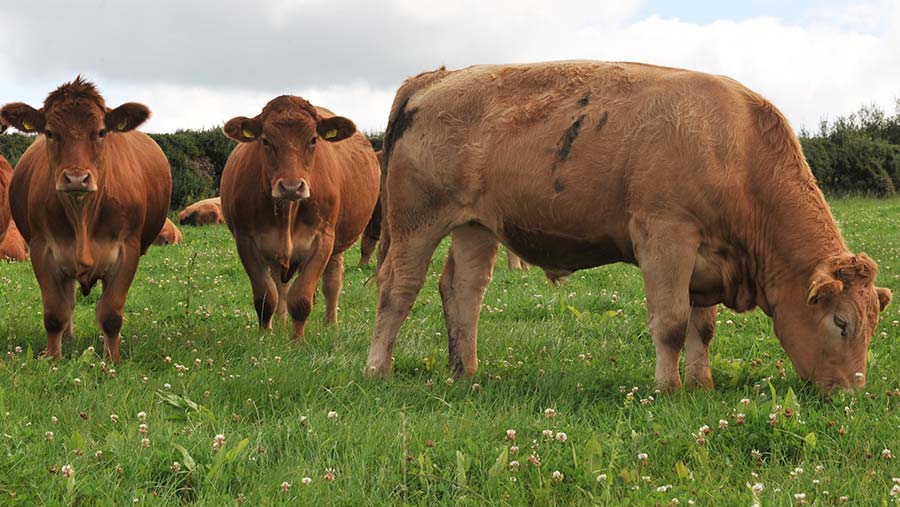Post-mortems show spike in blackleg cases

An increase in blackleg has been noted at a County Durham post-mortem laboratory this summer, which has worsened into the autumn.
The latest observations from Farm Post Mortems (FPM), Hamsterley, show blackleg is on the rise, cattle farmers are being warned.
Caused by clostridial bacteria, the condition is the second-most common diagnosis at FPM, with Clostridium chauvoei the most frequent cause, explained Liz Genever, AHDB Beef & Lamb scientist.
Research work funded by AHDB Beef & Lamb and MSD Animal Health found the problem to have increased through September and October.
See also: Blackleg disease warning in Scotland after rise in cases
What to watch for: Clinical signs of blackleg
- Affected animals often found dead
- Temperatures are high (more than 41C) and cattle are depressed and off food
- Lameness can be seen if leg muscles are affected
- Affected muscles fill with gas bubbles and can feel swollen or crackly
Dr Genever said the bacteria is often found in soil and cattle faeces and the best route to beating the bacteria is by using vaccines, which are cheap and effective.
Prevention by vaccination is the best approach, as treatment with antibiotics is unlikely to be effective unless started in the very early stages.
“There is a vaccine available that only covers blackleg, but it is also covered by multivalent clostridial vaccines. Talk to your vet for advice for your farm.
“Several clostridial vaccines are broad-spectrum, so will also prevent other important clostridial diseases like black disease [important on flukey farms], clostridial abomasitis and disease caused by Clostridium perfringens [pulpy kidney].”
How blackleg works
Often caused by Clostridia chauvoei – but also septicum and novyi – blackleg most often affects younger animals (six to 12 months). Outbreaks often increase at turnout or where earthworks are taking place that leave exposed soil.
After being eaten by cattle, bacteria form spores that are absorbed into the bloodstream and lie dormant in the muscle, explained Dr Genever.
Trauma events such as injuries sustained at the feed barrier or bulling “wake up” the spores.
Blackleg cases do not require trauma, but can be seen following a particularly heavy bacterial load, added Dr Genever.
